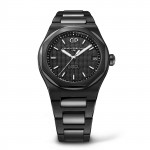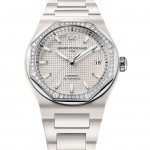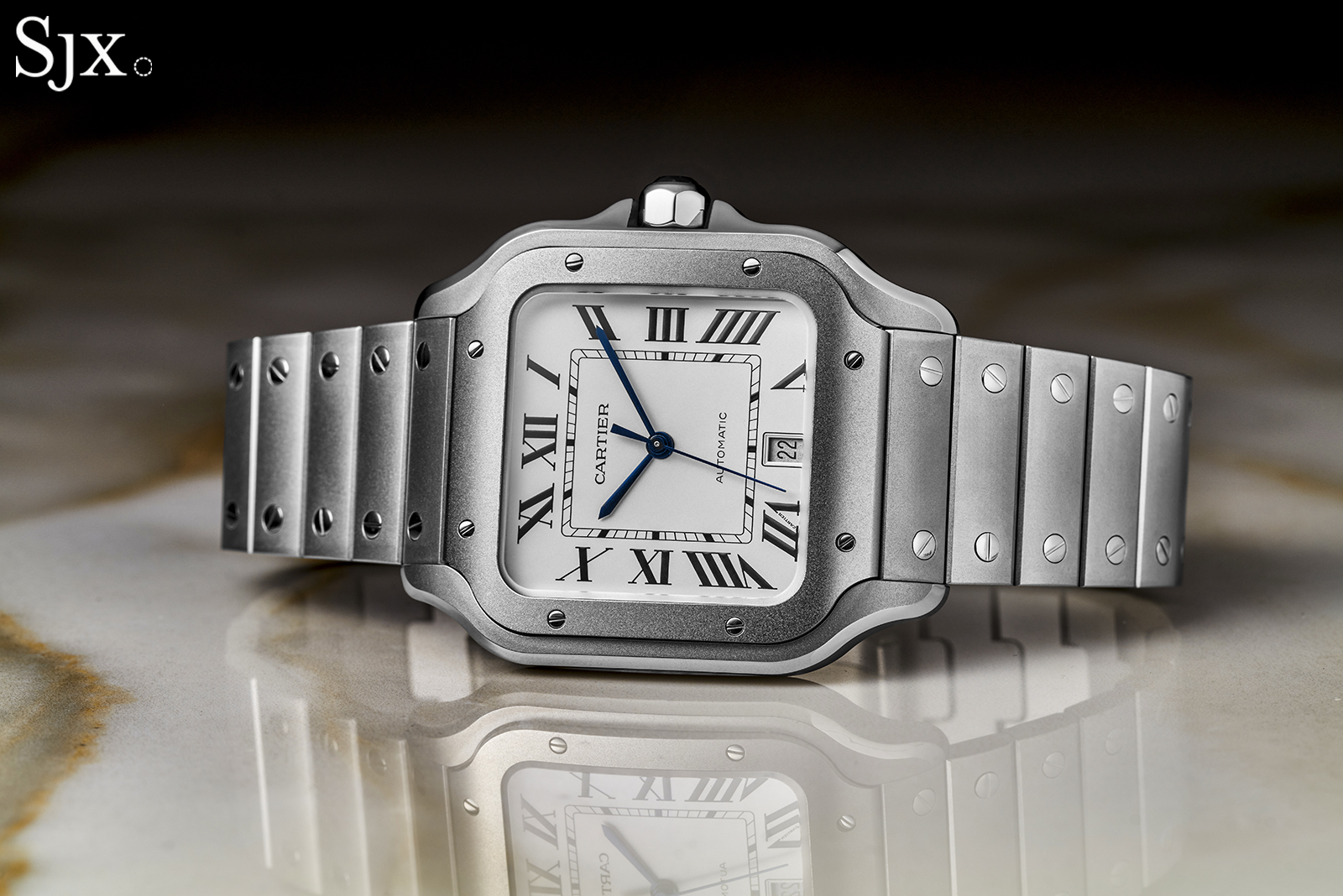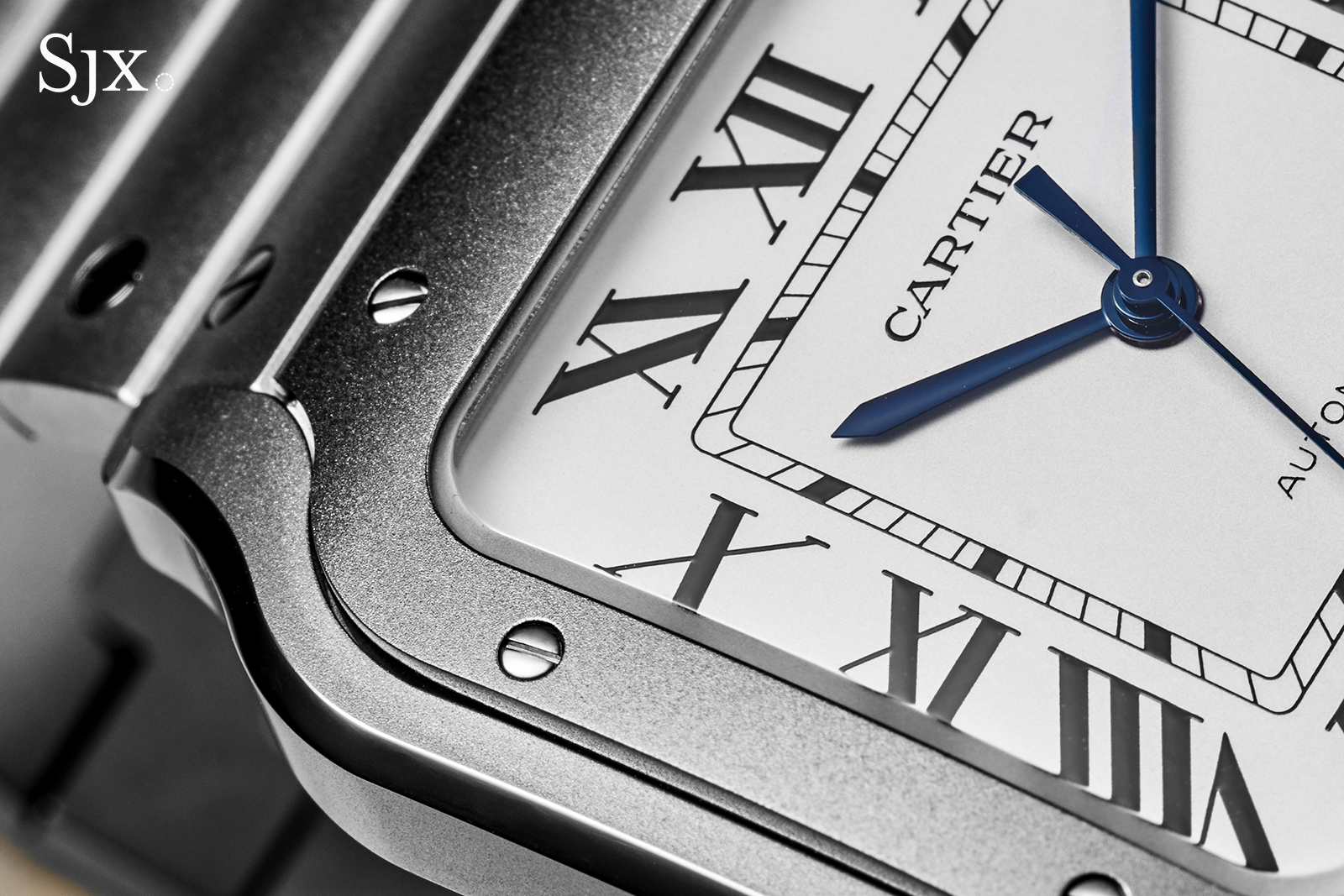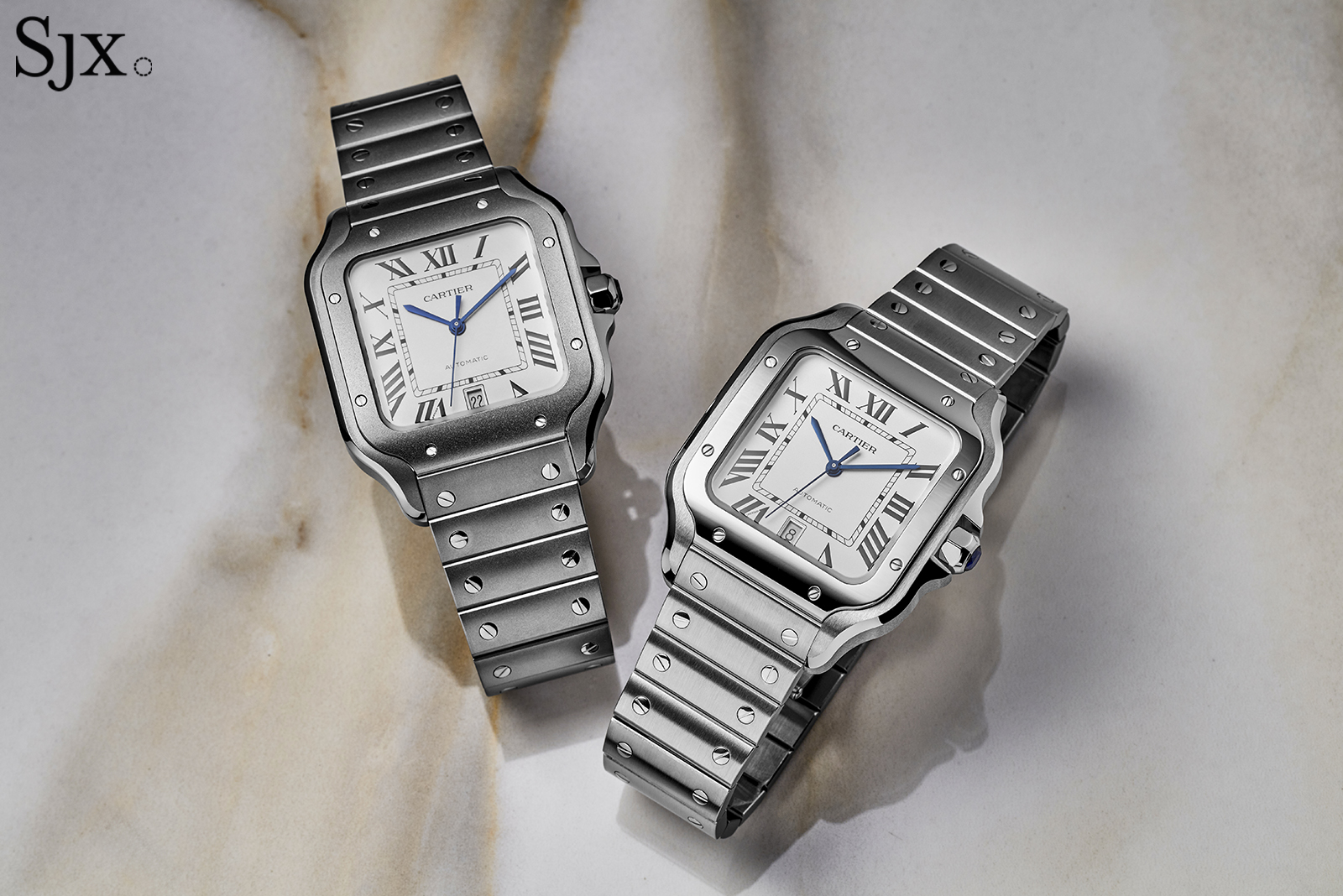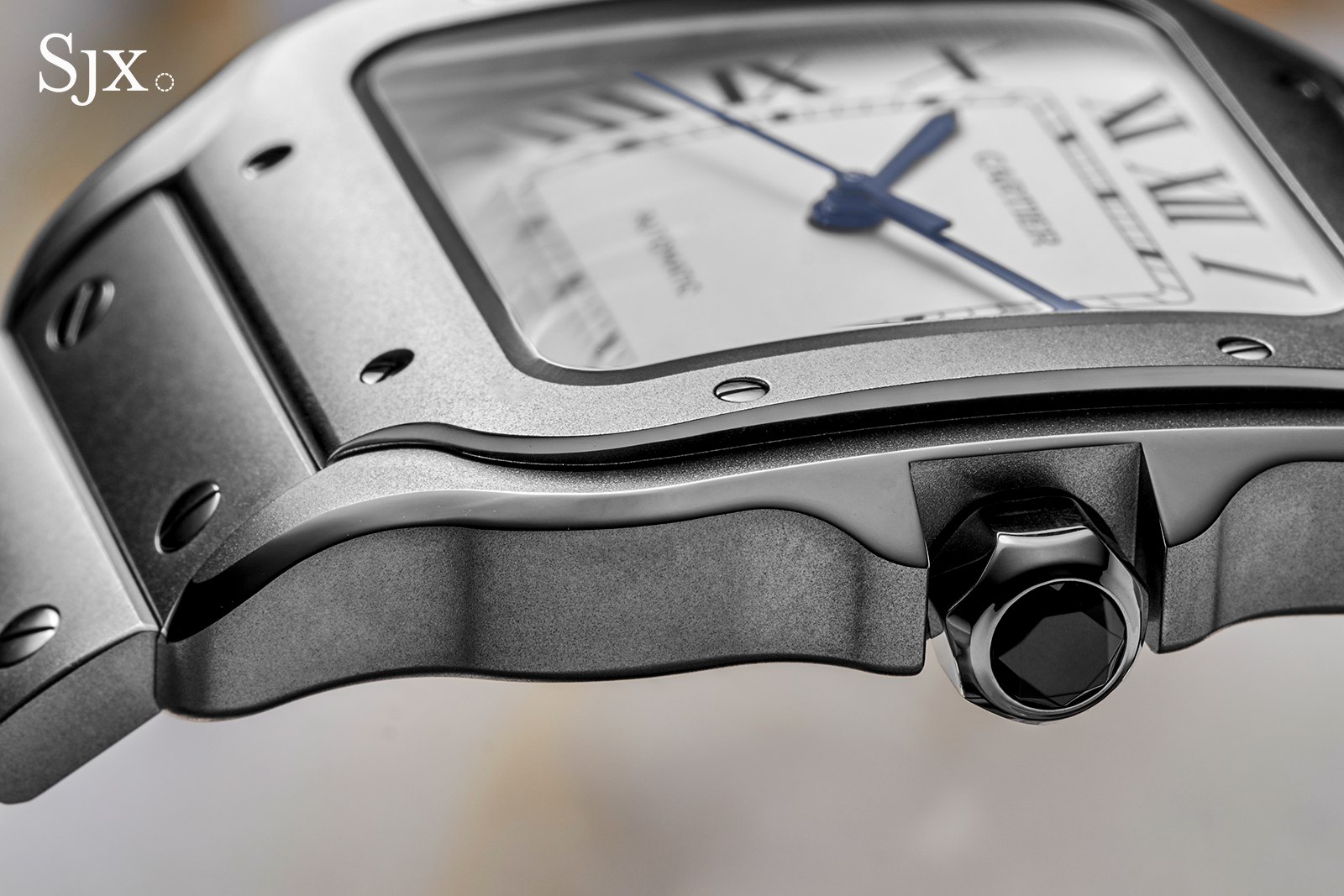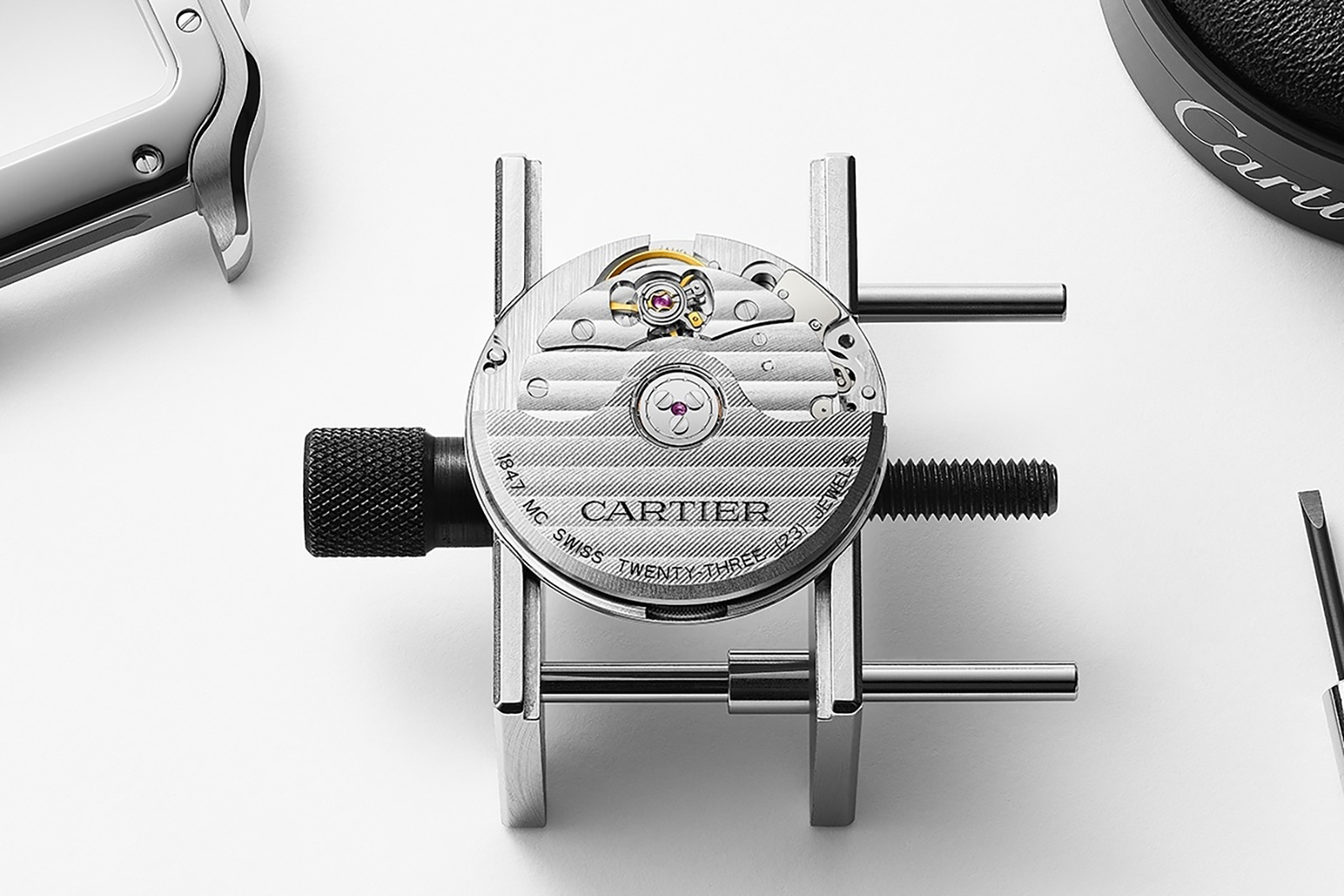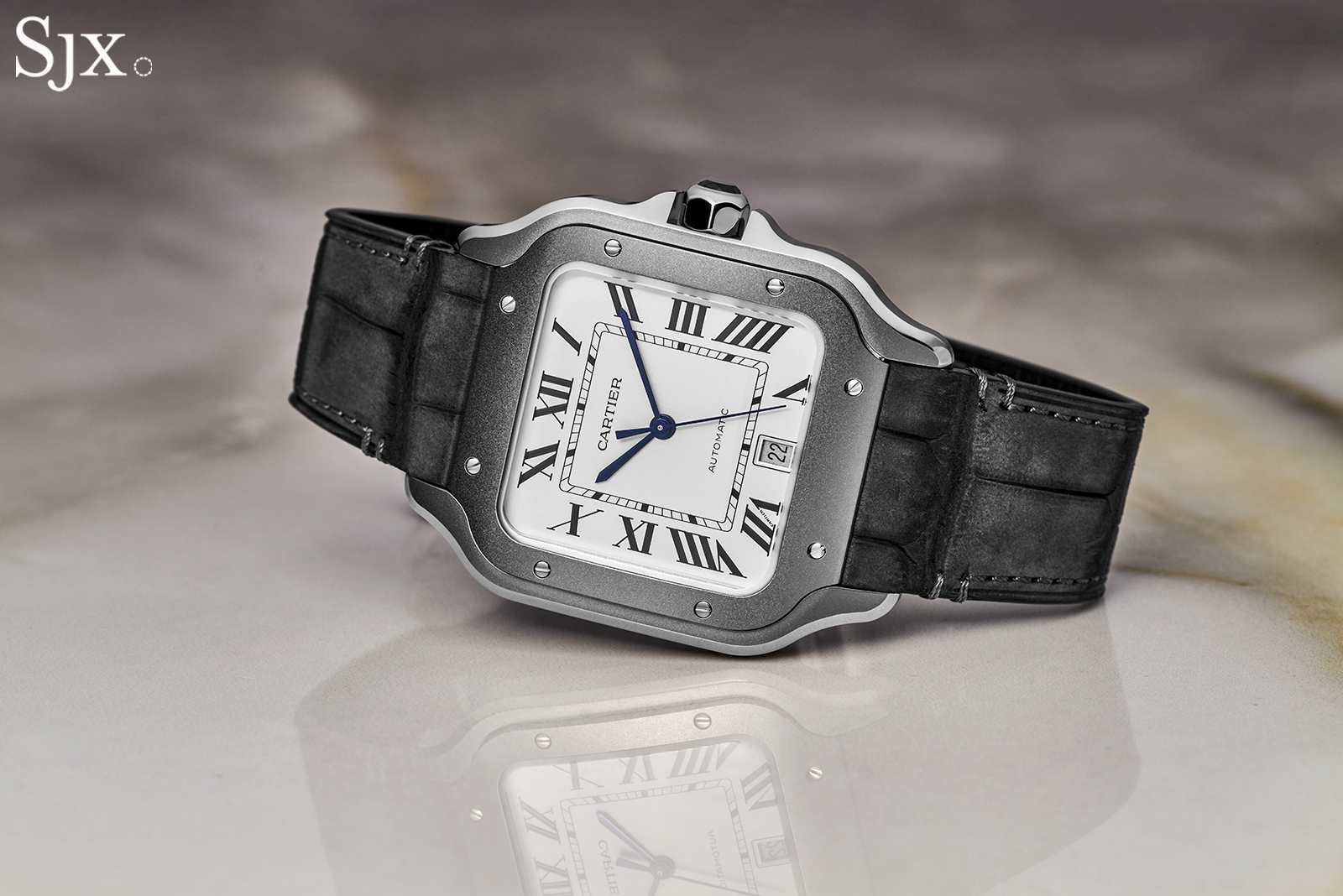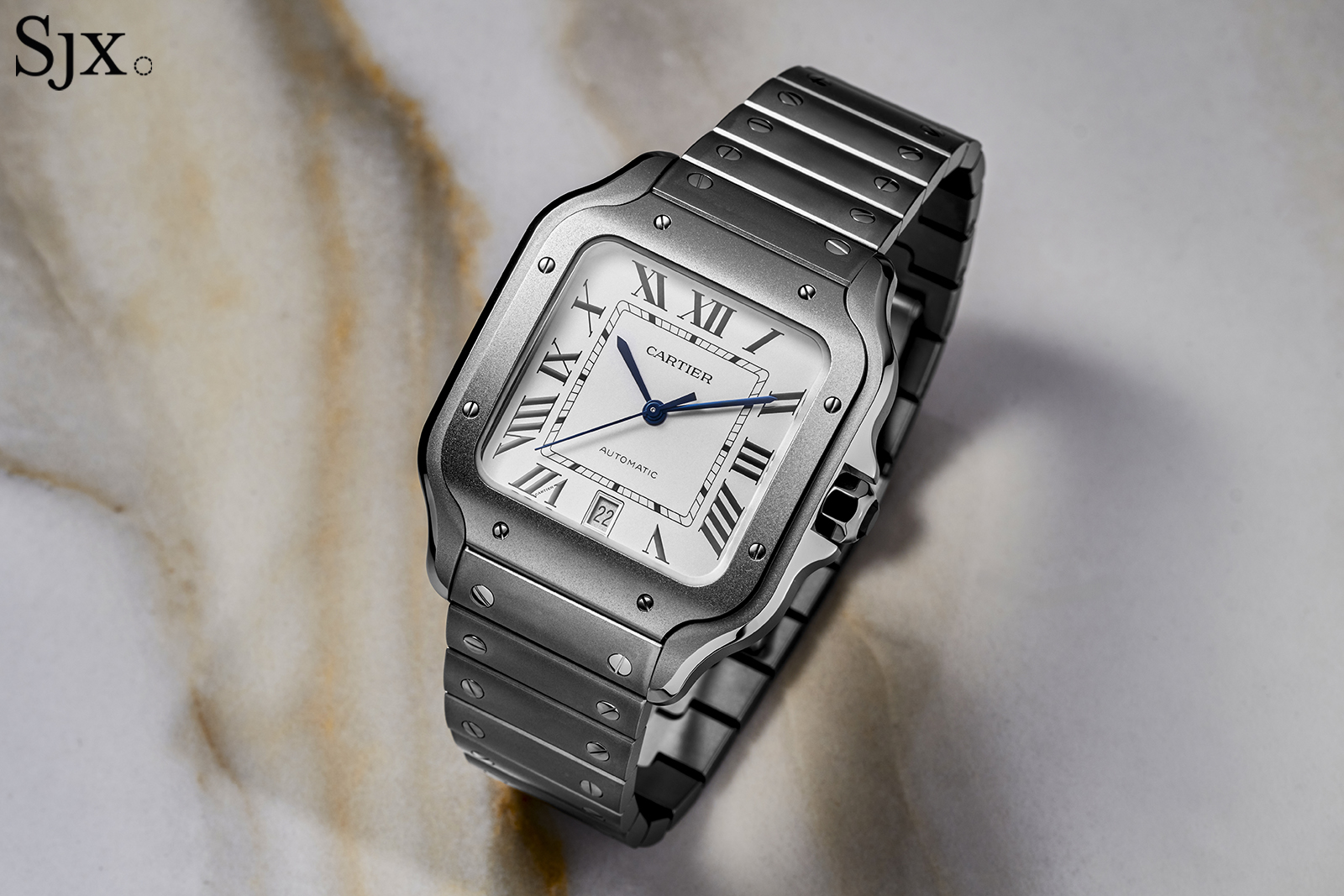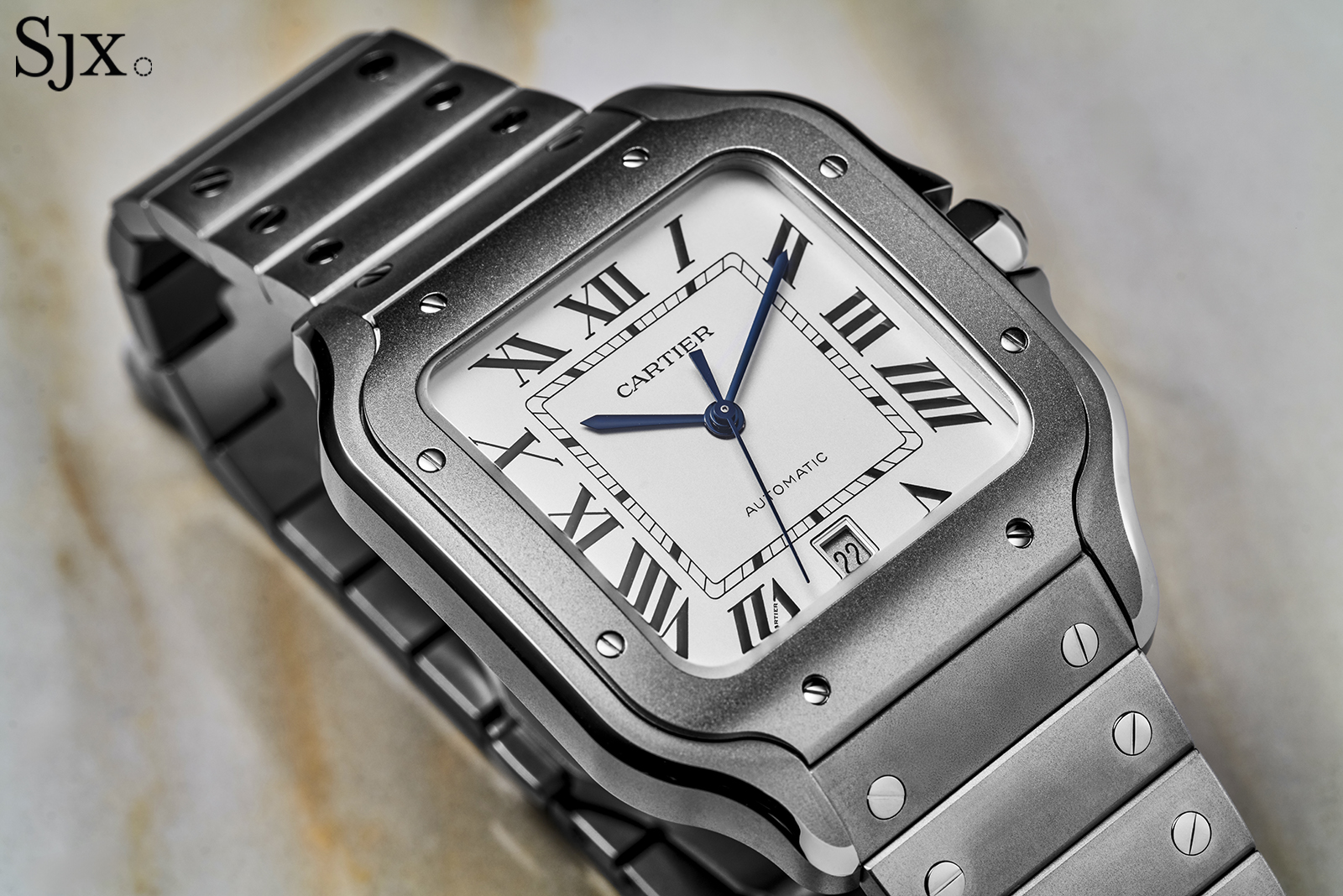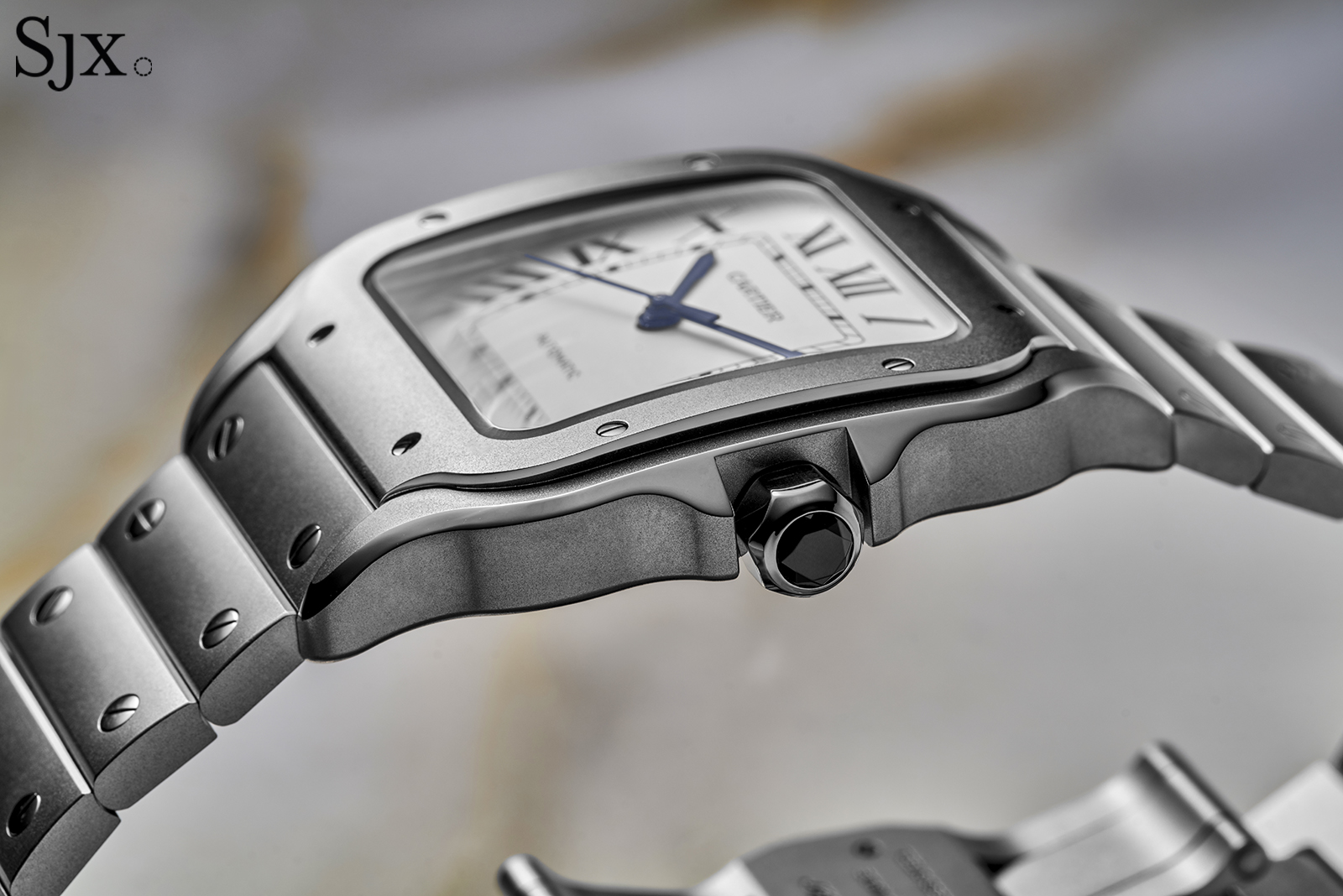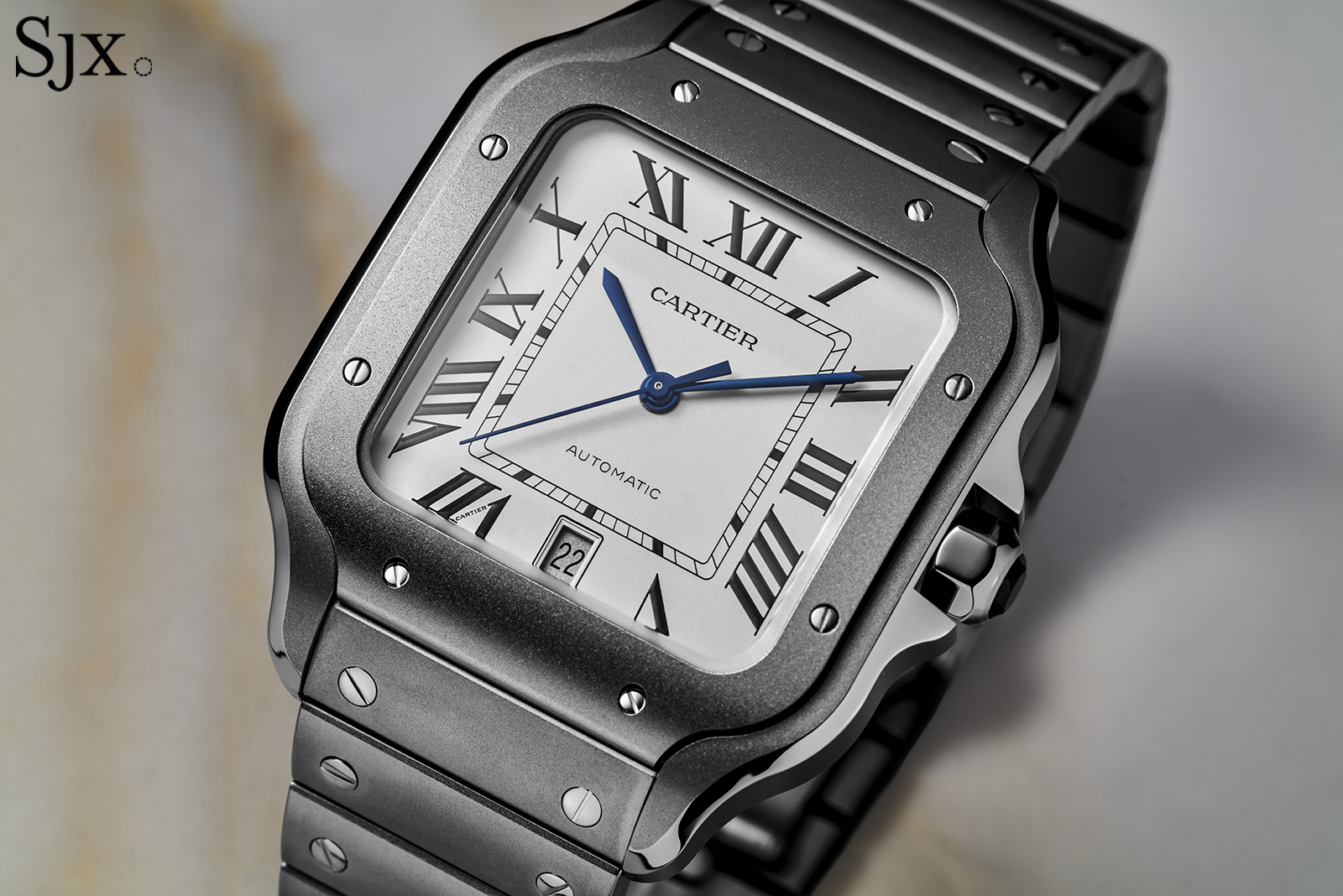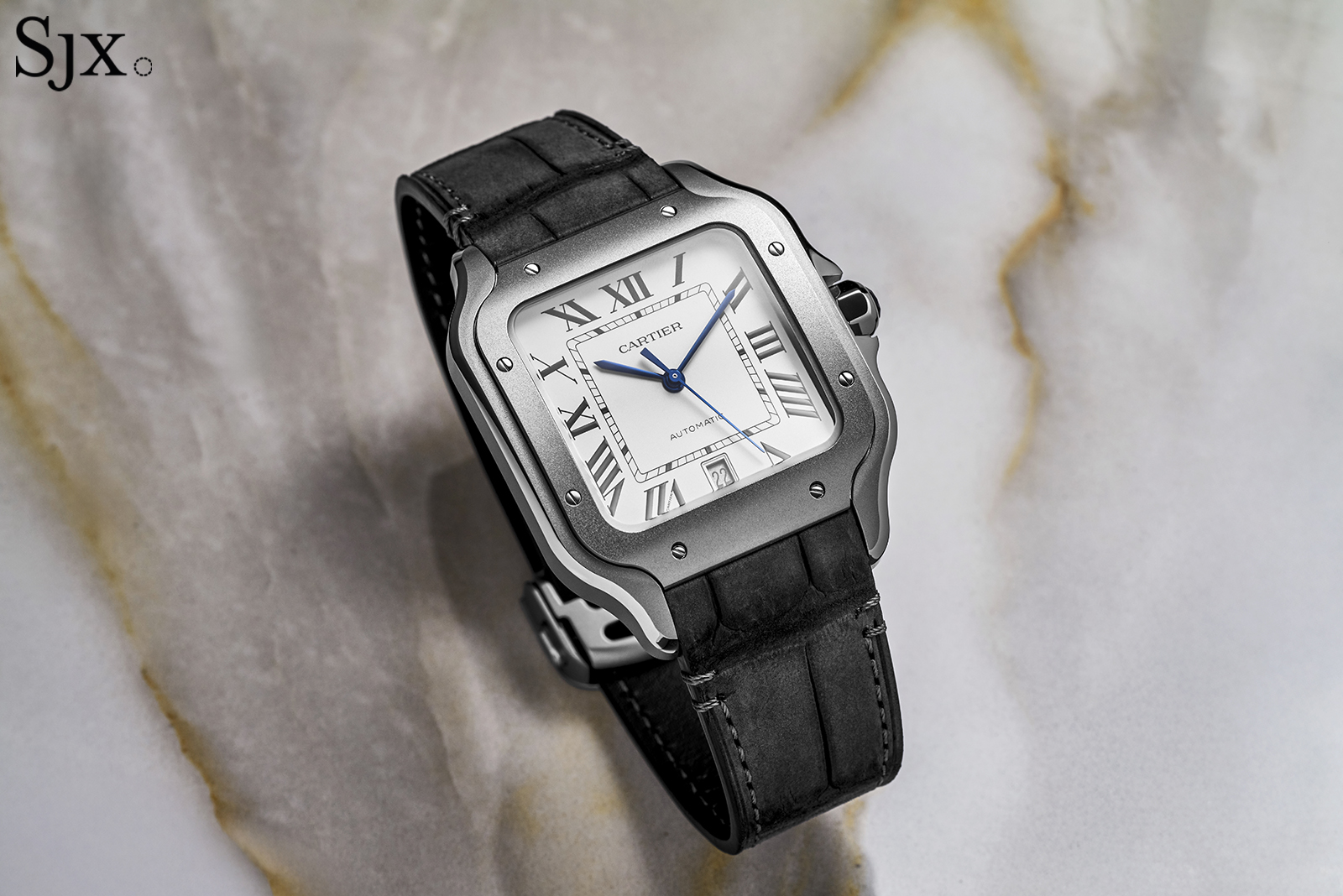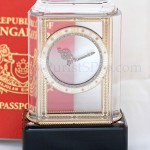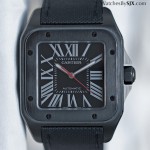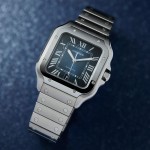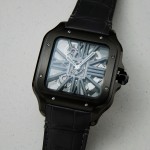The Laureato Fifty is a Milestone for Girard-Perregaux
A compact and appealing limited edition to mark 50 years.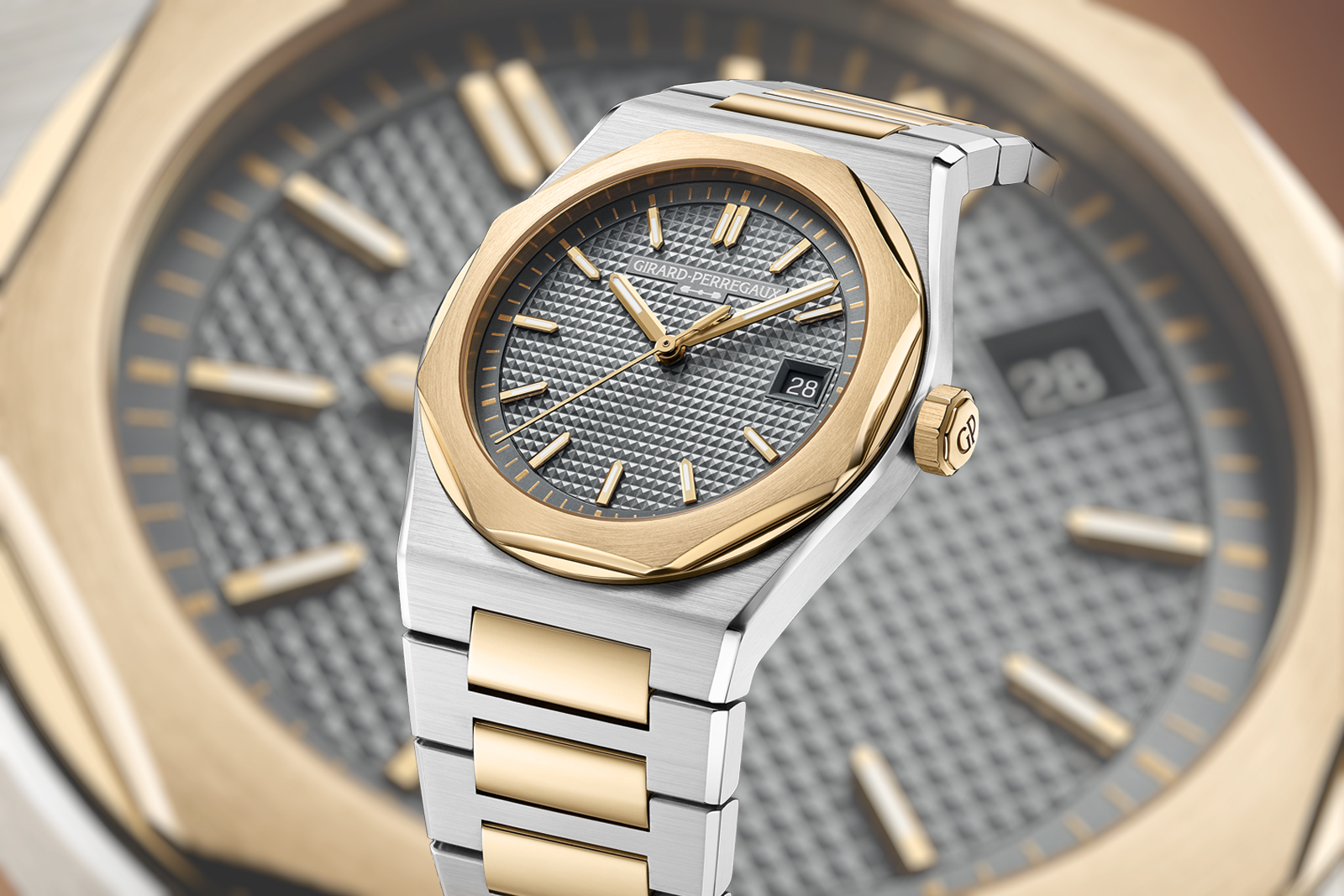
To celebrate the 50th anniversary of its most enduring wristwatch design, Girard-Perregaux (GP) has just unveiled the Laureato Fifty, a watch that highlights the brand’s storied history, while asserting the manufacture‘s place in the current competitive market. As expected, the watch is powered by the brand’s new workhorse calibre GP4800, which makes its official debut here.
A limited edition of just 200 pieces, the Laureato Fifty is dressed in a two-tone case of steel and yellow gold, echoing the 1975 original. Though this is a one-off limited edition, it is more than likely that this revised Laureato styling will be implemented across the Laureato line in the coming year.
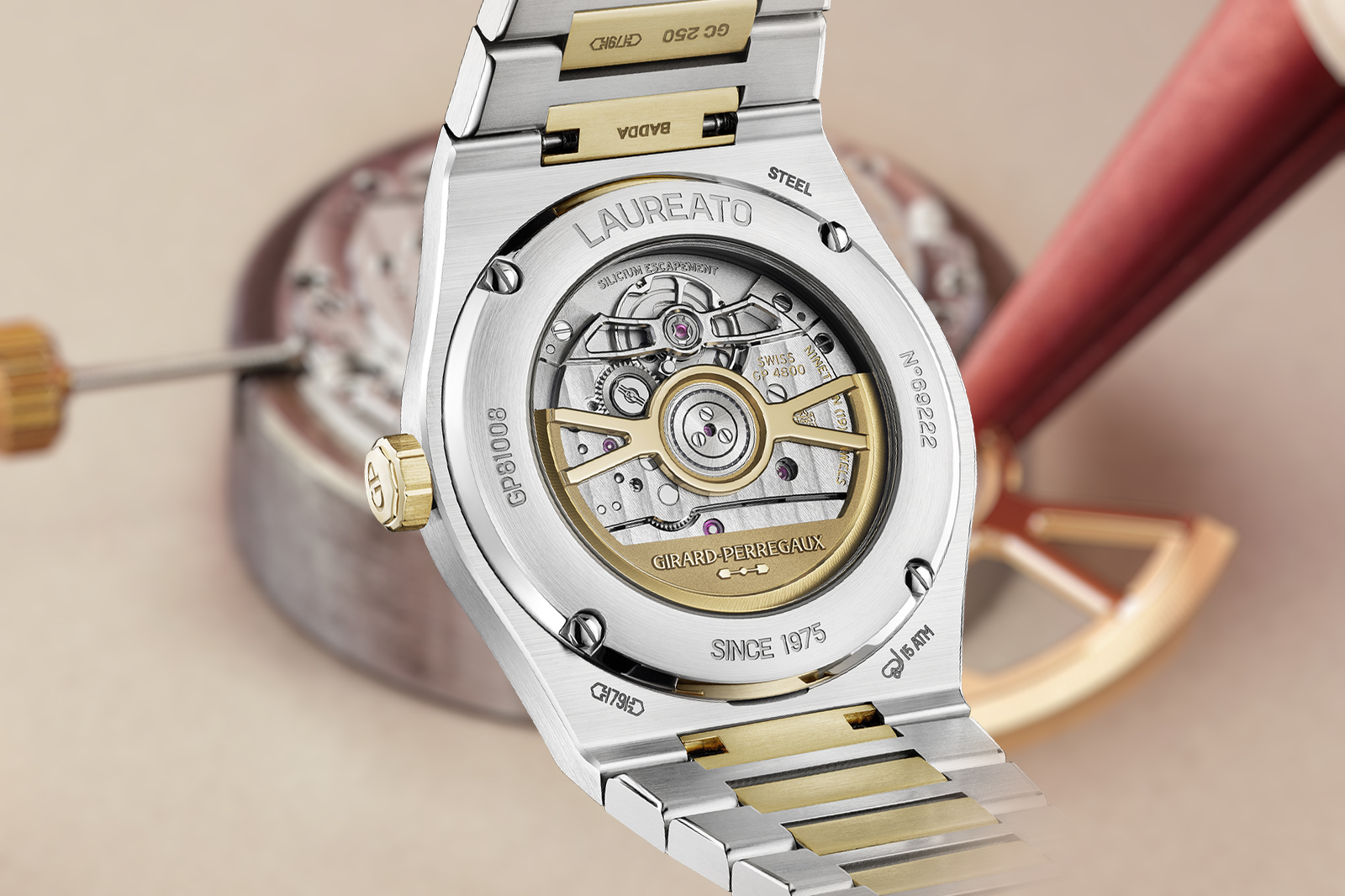
Initial thoughts
To understand the Laureato Fifty, we must first consider the era to which it pays tribute. The original design of the Laureato, presented to the world in 1975, appeared right between Gerald Genta’s iconic duo of the Audemars Piguet Royal Oak and Patek Philippe Nautilus, launched in 1972 and 1976, respectively. Compared to these designs, which would come to define the category, the Laureato was different in a few respects.
First, the original design is credited to one of GP’s in-house designers, whose name has been lost to time. Second, the original Laureato was cutting edge at the time with its proprietary, chronometer-certified quartz movement, compared to the ultra-thin automatic Jaeger-LeCoultre-derived calibre found in the Royal Oak (and later, the Nautilus).
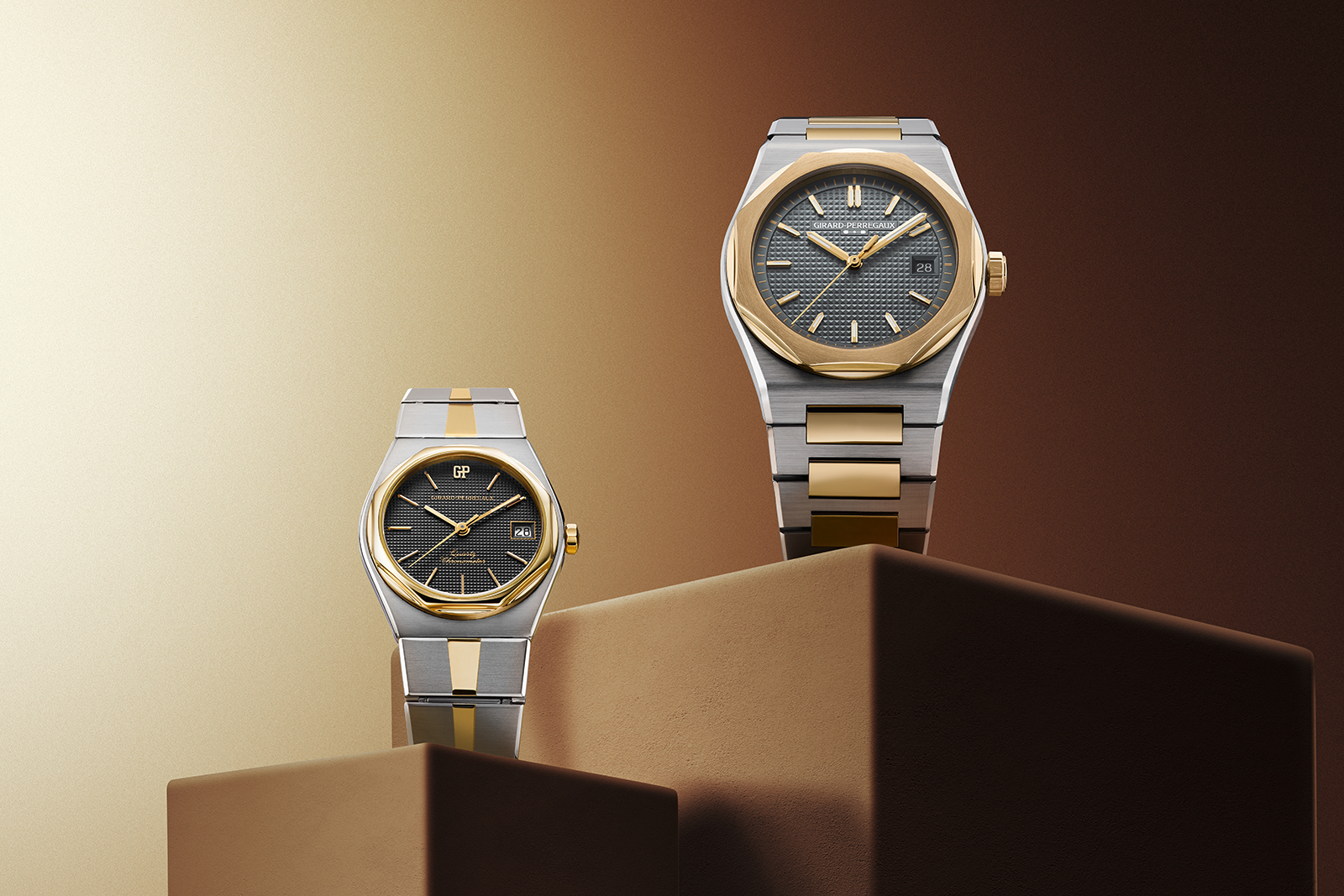
Turning to the new Laureato Fifty, we see that GP remains true to the original product concept; it’s an in-house design, paired with an in-house movement. It’s easy to forget how sure-footed GP was in the past in terms of movement engineering and overall product quality, especially in the 1990s and early 2000s when it was a leading supplier of automatic movements to high-end brands, although watches like the Laureato Fifty might help change that.
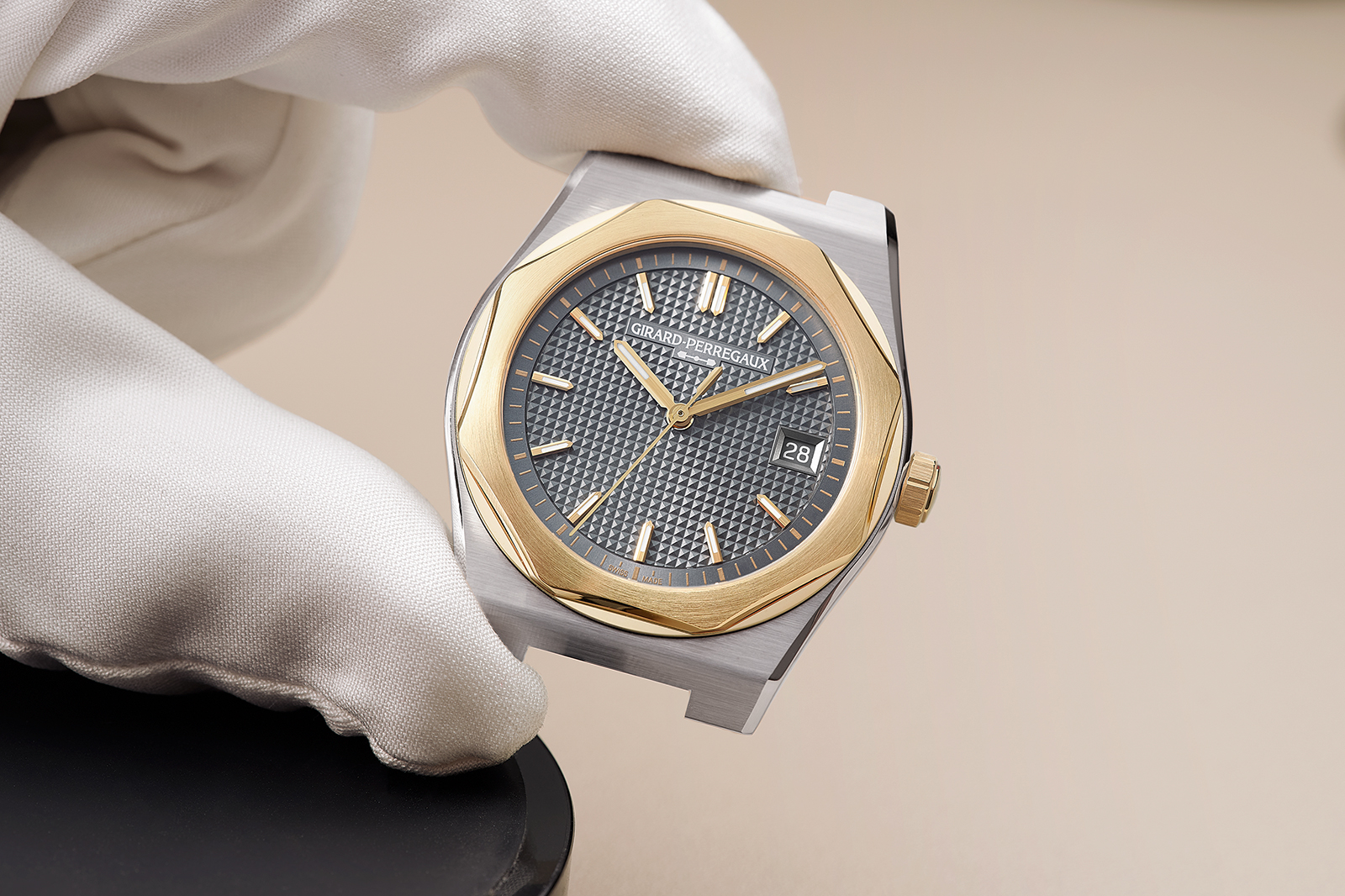
The historical association is tangible, and the current model stays true to the 1970s original. Compared to the current generation Laureato, the anniversary edition has a cleaner design, most notably doing away with the “GP” emblem at 12 o’clock, which is certainly more appealing.
The 39 mm size feels timeless, and the two-tone design, matching gold accents to the steel construction, is done beautifully. Integrated bracelets have become a somewhat overused trope in the industry, with many brands, new and old alike, looking to capitalise on the success of a handful of sought-after models. This is certainly not the case with GP, which adopted this format long before it became a trend.
The execution itself is very convincing, with build quality that is vastly superior to the quartz original. And GP has gone a long way to smartly finish every facet of the case and bracelet, pairing brushing with high polish and sharp edges with rounded corners.
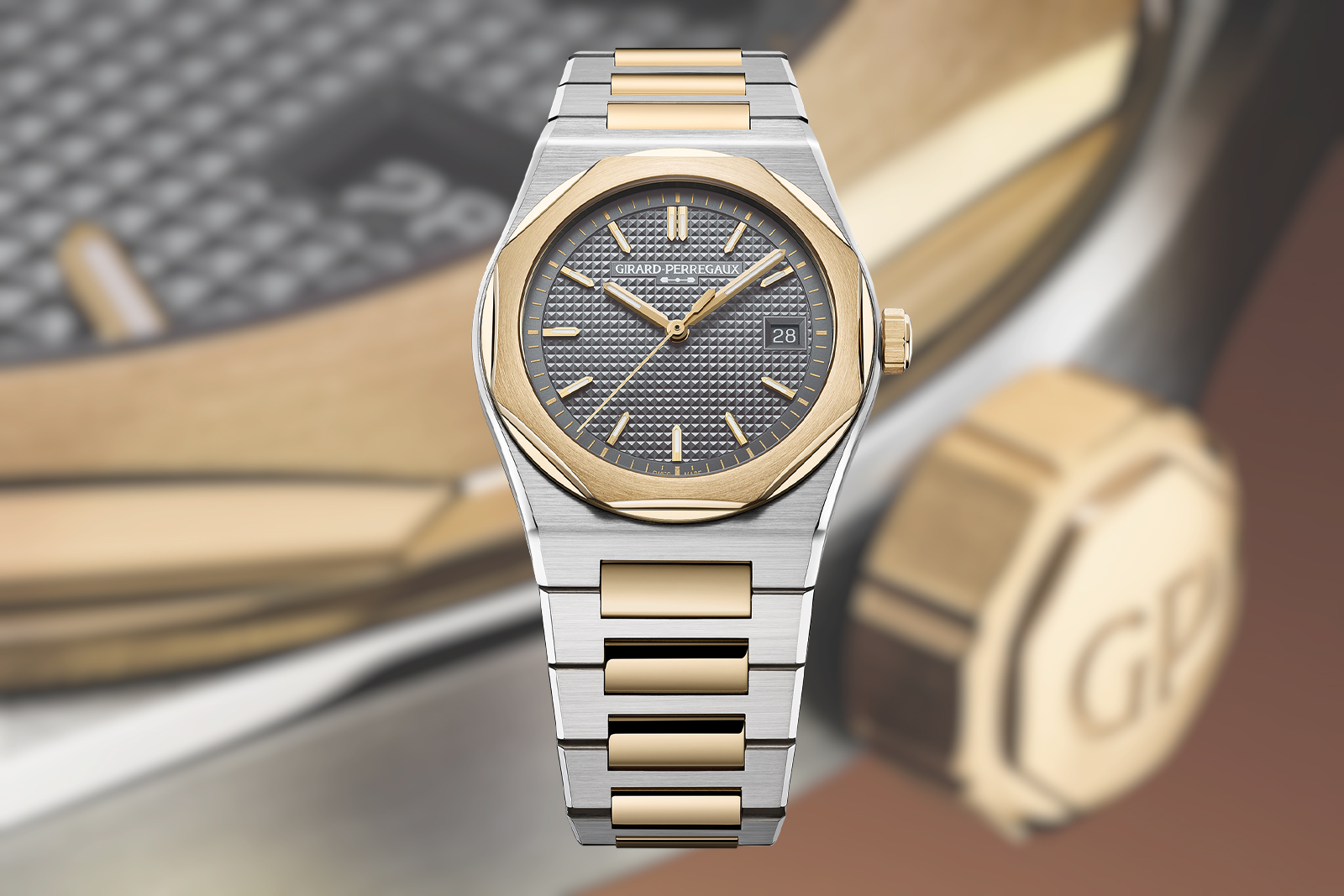
As a whole, the Laureato Fifty would be perfectly at home on the wrist of a 1970s sporty-chic dandy, while managing to meet the prevailing tastes of 2025. Bridging a gap of 50 years this well is not an easy feat, since watches themselves have come a long way, going through a lot of different styles. Furthermore, the aesthetic norms of today are not always compatible with the loud styling of the 1970s, yet GP manages to pull it off, blending modern touches and a new movement with period-correct charm.
Dialling it down
Over the years the Laureato collection has been a versatile platform for GP, which has at times endowed the line-up with chronographs, tourbillons, and other complications, as well as a variety of more sporty designs. Here however, the manufacture went for very clean and sharp lines, from dial to bracelet.
The blueish-grey dial is embossed with a deep hobnail pattern. Though undoubtedly stamped, rather than cut with a straight-line engine, the Clous de Paris guilloché motif is historically accurate to the model’s origins. And though the 1970s original had a large “GP” at 12 o’clock, the anniversary models opts for an elegant double baton.
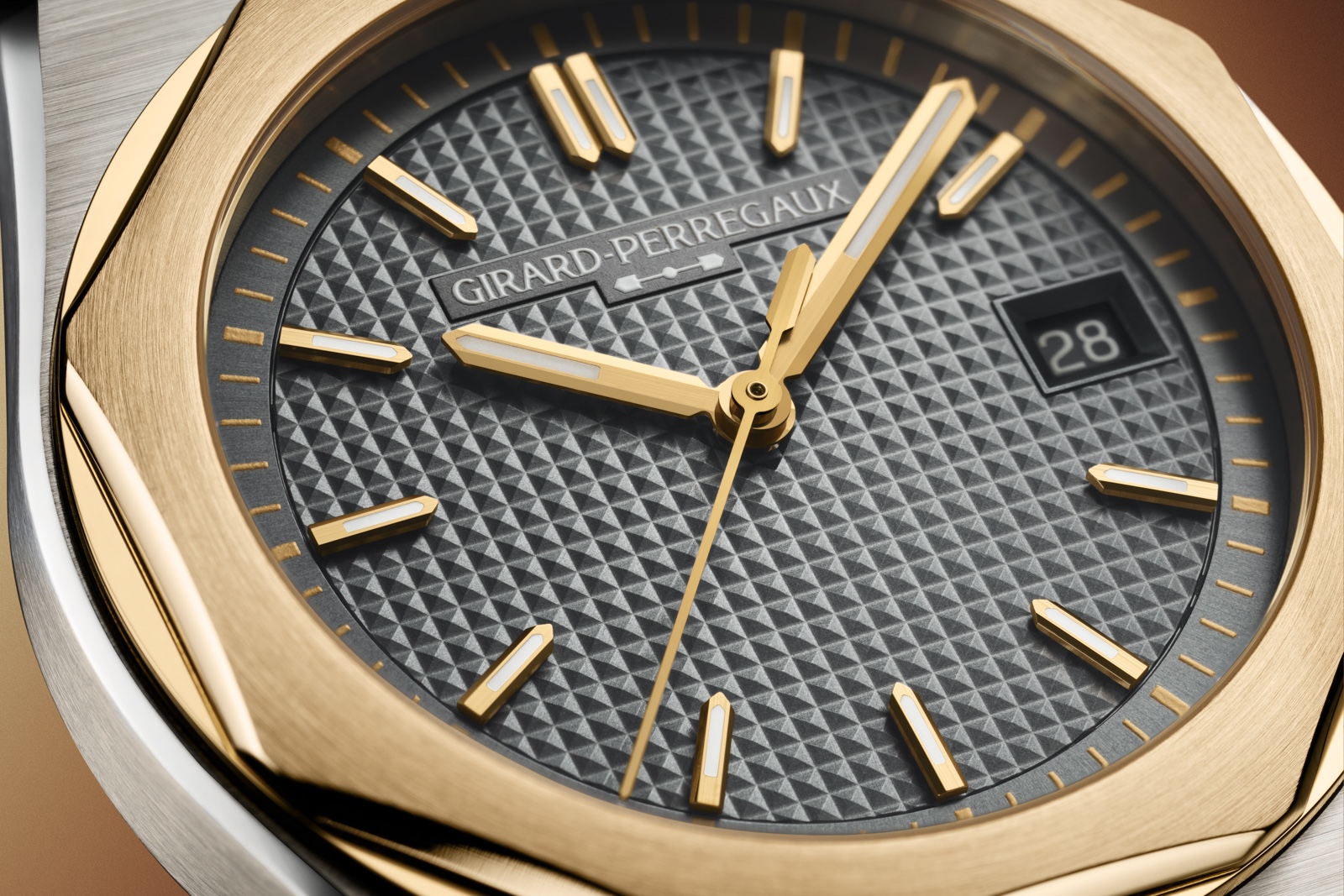
The faceted golden indices look sharp and bring a degree of visual warmth to the dial. Moreover, their shape matches with the baton hands, leaving a good impression of cohesion. The facetted hands and indices are an upgrade over the current generation that makes do with flat hands and markers.
There is also a discreet date window at three o’clock and an outer minutes track printed on a raised flange. Credit to the designers of the date window, it features an attractive frame and a colour-matched date wheel, avoiding the trap of looking like an afterthought.
Beautiful case lines
While the dial is faithful to that of the original Laureato from the 1970s, the case has been revised to suit modern tastes and the model’s own recent history. The eight-sided bezel is retained, as-is the two-tone motif for the bezel and integrated bracelet. Compared to the current generation, the proportions of the bezel and case have been reworked ever so slightly for a more retro feel.
The brand also indulged collector preferences for smaller cases, choosing a case diameter of 39 mm and a slim height just under 10 mm. But the Laureato Fifty is chunkier and feels more robust than the original, trading sharp lines for more nuances curves.
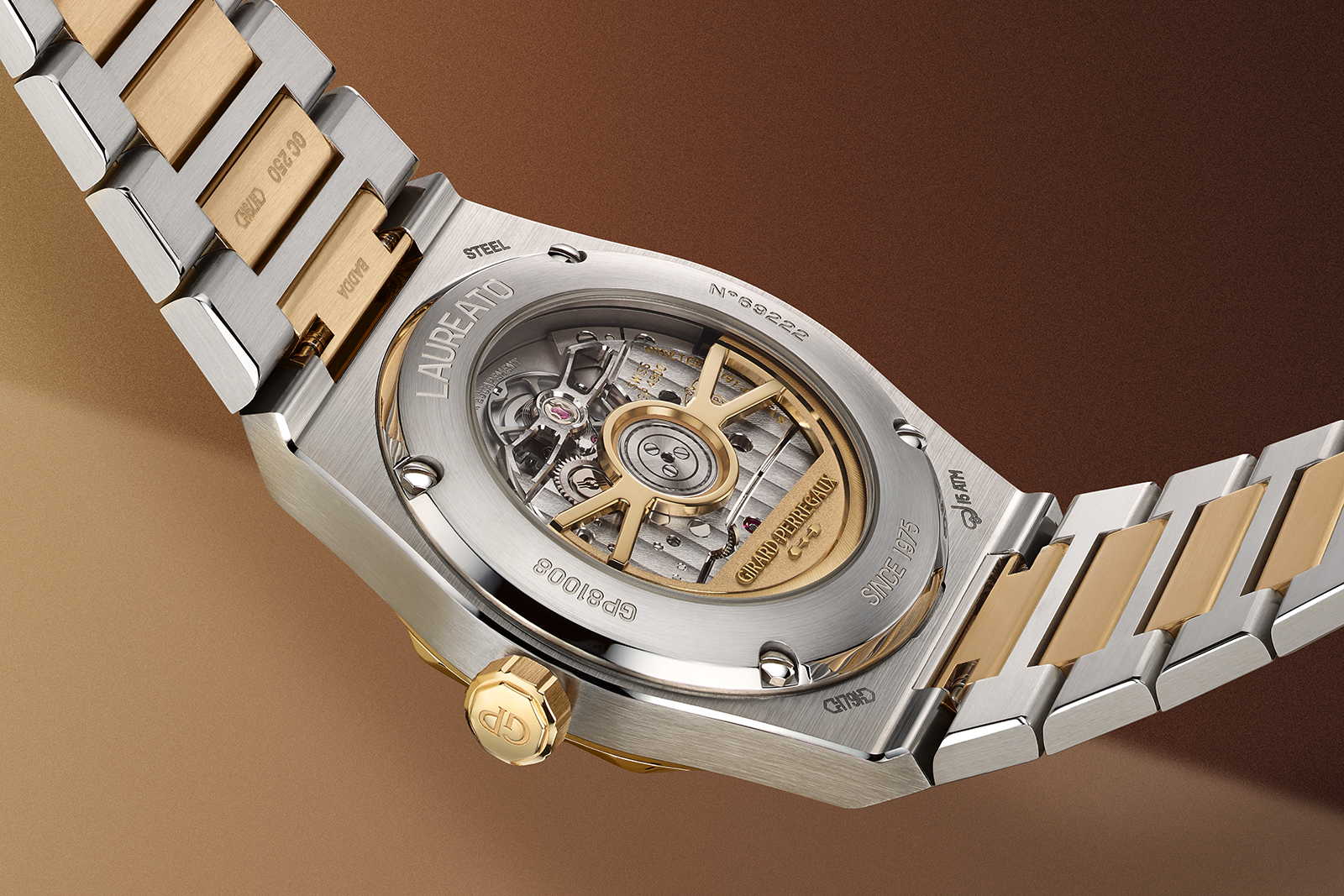
The fine case lines are found on the backside of the piece as well.
Here, most of the edges of the case and bracelet are rounded or beveled. There is a thick, polished bevel running on both upper case flanks and all along the sides of the integrated bracelet. The upper side of the case is horizontally brushed with a heavy grain that extends to the H-shaped steel bracelet links, contrasting well with the polished components in 18k 3N yellow gold.
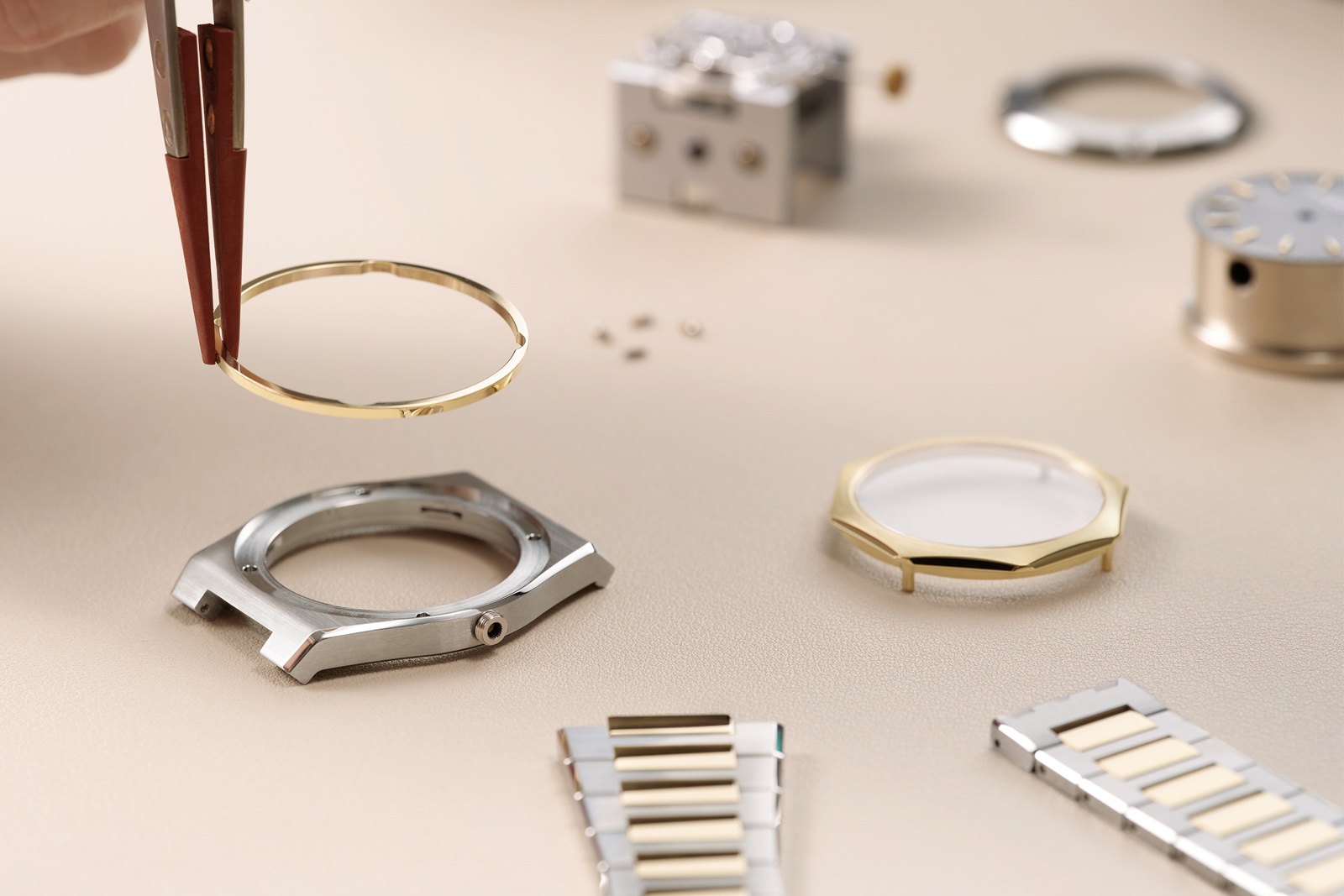
The two-piece yellow gold bezel is clearly a central trait of the Laureato Fifty. It also blends brushed and polished finishes, but here the brushing is circular and frames the dial. The brushed portion is a raised octagonal shape, made as a separate piece, with cut and rounded corners. The same bezel also has a lower, fully circular base, which is highly polished and sandwiched between the octagonal bezel and the steel mid case.
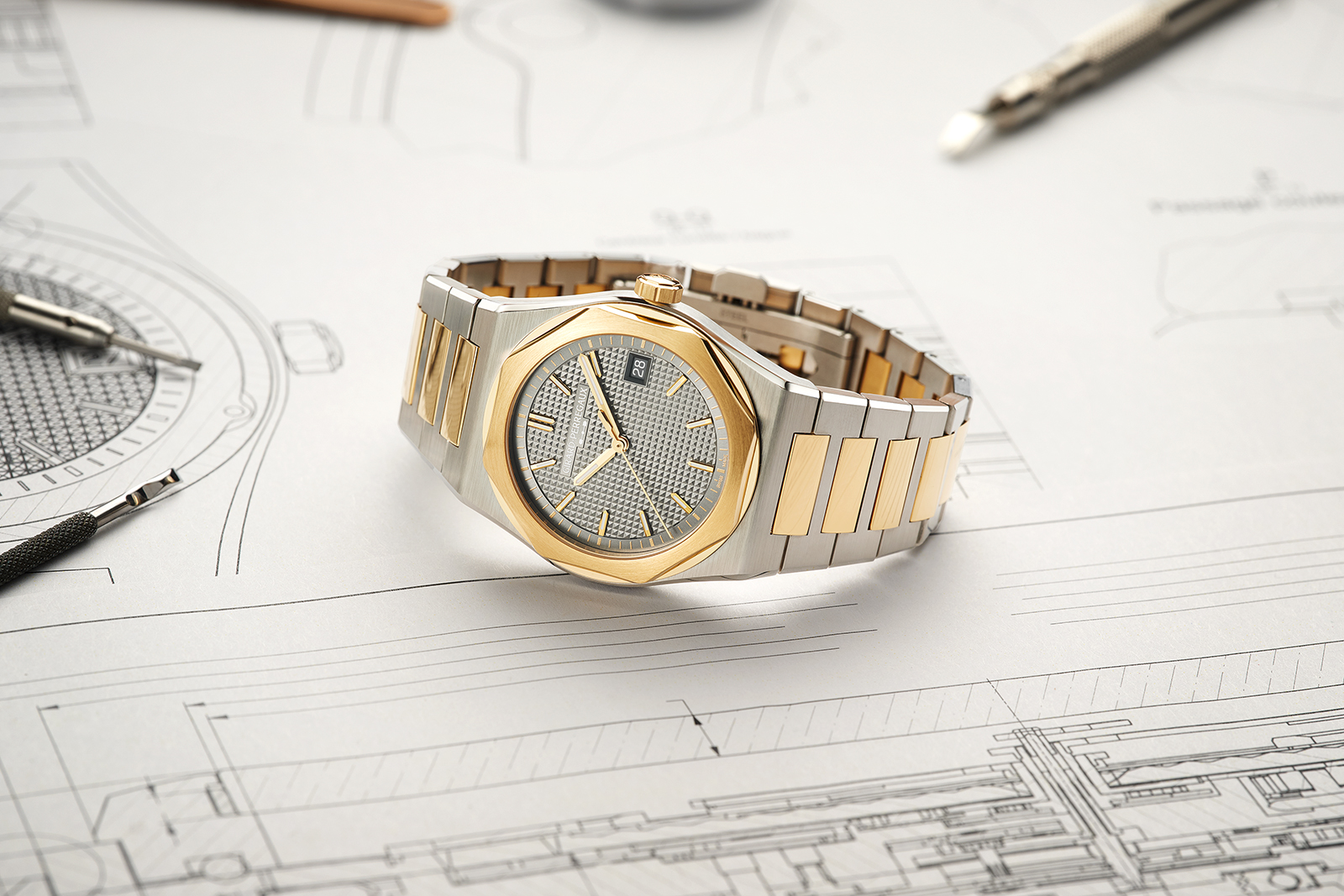
Conveniently, the case is water resistant to 150 m, surprising given that the gold octagonally-cut crown is not screw-down and the case back is secured by just four screws. The fact that GP managed a 150 m rating despite this construction is a good indicator of the precision of manufacture. Since the Laureato is mostly marketed as a sporty line, this robust rating is reassuring.
A clean bracelet design
The bracelet echoes the design language established by the case and bezel. The H-shaped links are done in coarsely brushed steel with a thick bevel, and the bracelet articulates on curved and polished yellow gold inner links. The links taper progressively, from the integrated lug connection to the clasp. The bracelet is fastened to the wrist via a triple folding clasp, which is itself garnished with octagonally-shaped push pieces for deployment.
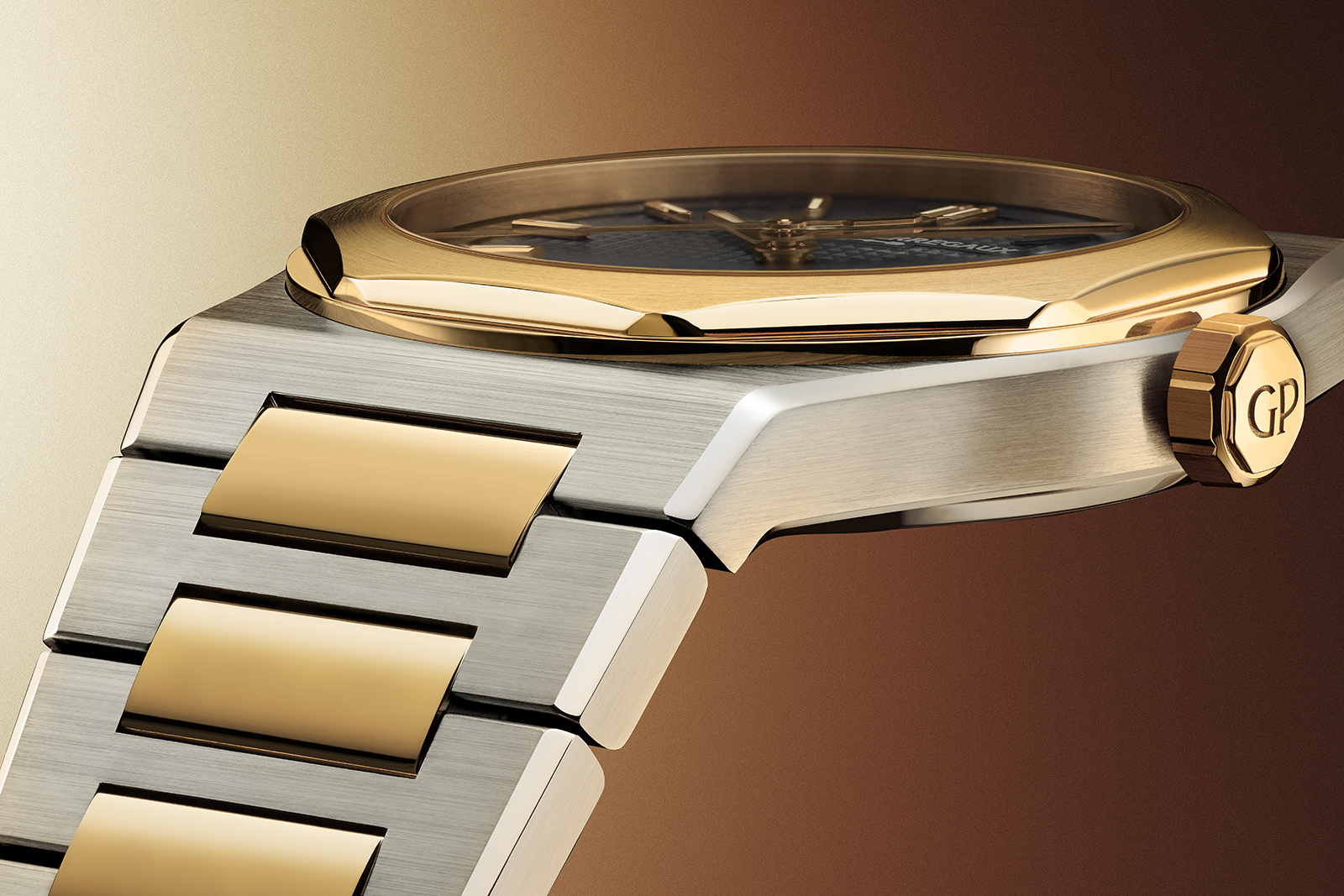
The clasp also features an on-the-fly micro-adjustment system which can be quickly adjusted through a 4 mm range; not something traditionally found on integrated bracelets, but an amenity that is increasingly becoming the norm.
GP didn’t spare any expense here, since the bracelet links are finished on every visible surface and are secured by screws (not pins), while also incorporating an ergonomic micro-adjustment system inside the clasp.
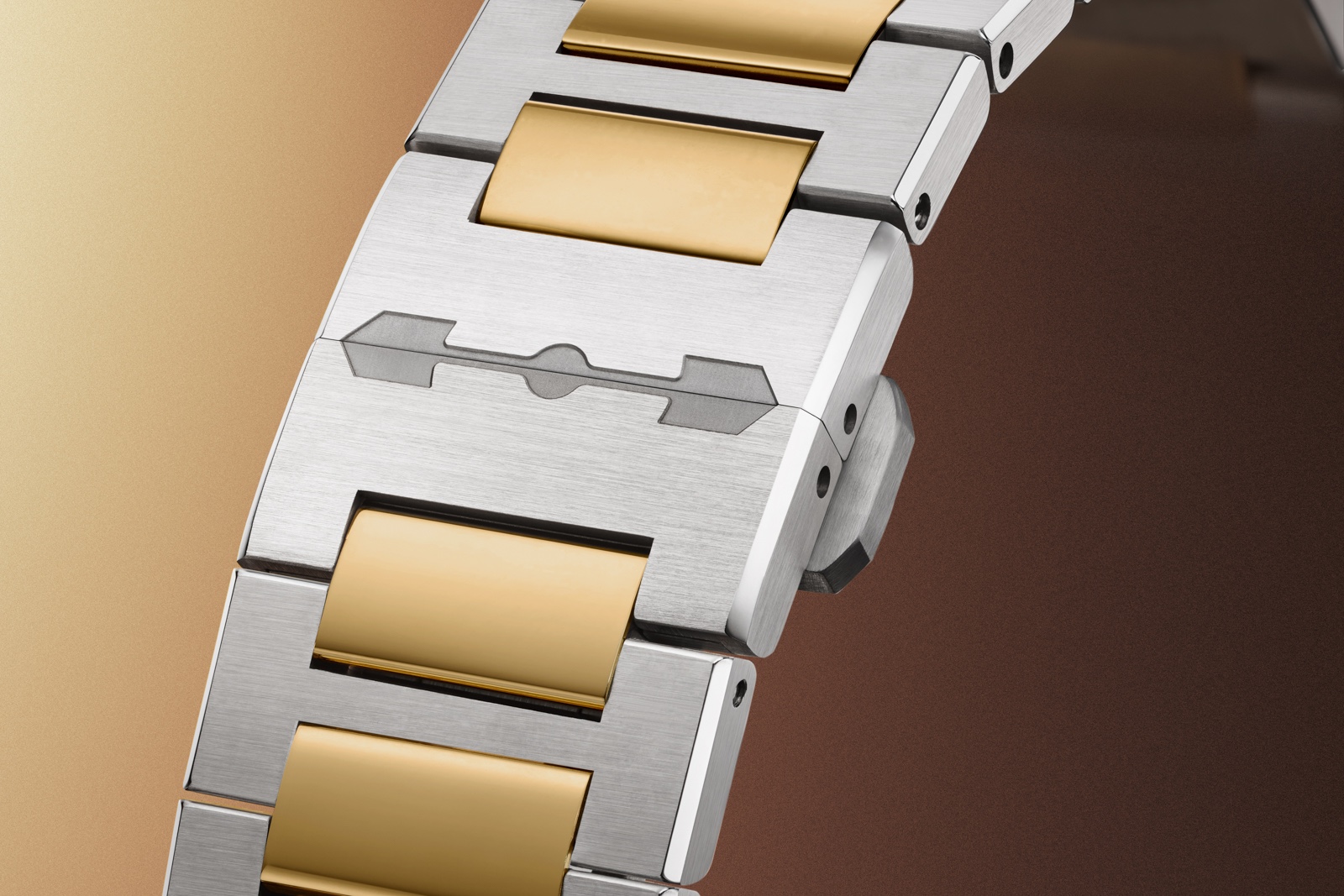
The new workhorse calibre
We covered the new GP4800 calibre in a recent in-depth story, but the Laureato Fifty marks the movement’s commercial debut. For years, the Laureato collection has relied on the aging 3000-series of calibres, making the launch of the GP4800 headline news. The new calibre’s main benefits include an updated winding system, which GP claims is more shock-resistant, a free-sprung balance, a silicon escapement, and more intentionally attractive architecture.
The new GP4800 looks to be the brand’s response to its competitors’ use of more updated and modern calibres. Time will tell whether the new workhorse movement will be as successful and reliable as the old 3000-series, but on paper the GP4800 appears well-equipped for success.
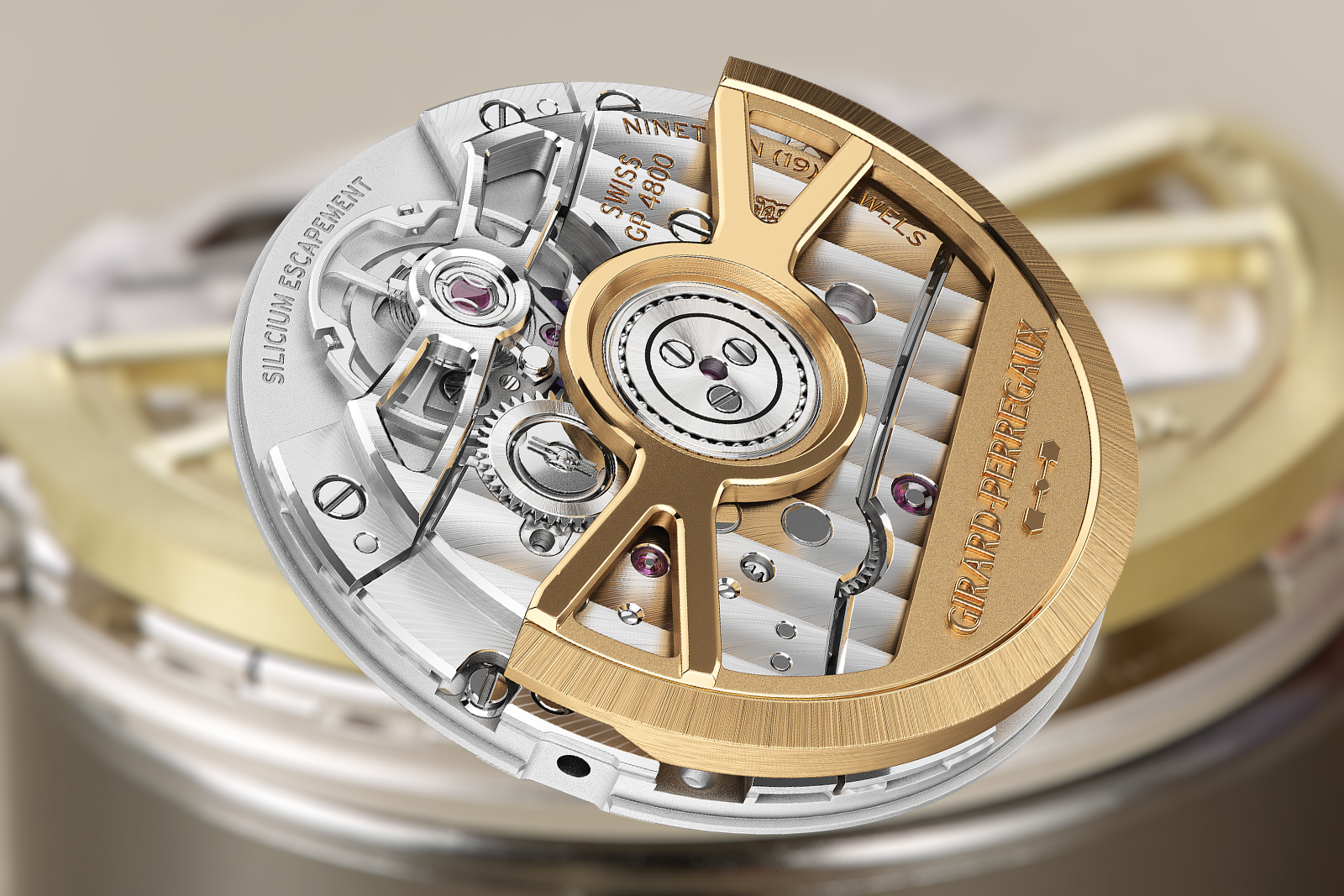
The movement is pleasantly finished, with wide vertical Geneva waves and a modern, almost monochromatic look. It also features a gold rotor, cut and finished to the same high standards as the Laureato’s bezel.
If there is one thing this movement lacks, it is a longer power reserve. Running for 55 hours at a pace of 4Hz, the GP4800 won’t match the three-day power reserves of many modern in-house calibres.
Key facts and price
Girard-Perregaux Laureato Fifty
Ref. 81008-63-3412-1CM
Diameter: 39 mm
Height: 9.8 mm
Material: Stainless steel and 3N yellow gold
Crystal: Sapphire
Water resistance: 150 m
Movement: GP4800
Functions: Hours, minutes, seconds, and date
Winding: Automatic
Frequency: 28,800 beats per hour (3 Hz)
Power reserve: 55 hours
Strap: Stainless steel and 3N yellow gold and triple folding clasp
Limited edition: Yes, 200 pieces
Availability: At GP retailers and boutiques
Price: CHF25,500 excluding taxes
For more information, visit Girard-perregaux.com.
This was brought to you in partnership with Girard-Perregaux.
Back to top.


